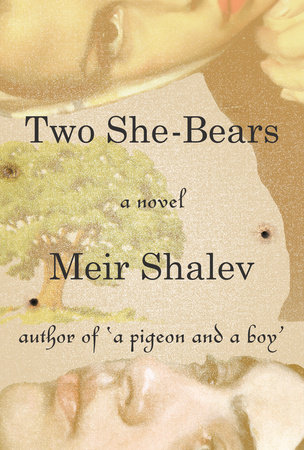Reading Group Center
- Home •
- Books by Category •
- Imprints •
- News •
- Videos •
- Media Center •
- Reading Group Center
Two She-Bears
By Meir Shalev
1. What is the role of storytelling in the novel, both oral and written? Who are the major storytellers and what’s distinct about each of their perspectives?
2. What aspects of village life and Jewish customs are passed down through to the present-day setting of the novel? Do they continue to carry the same meaning, symbolically and literally, in the characters’ lives?
3. Gender is a major determiner of characters’ education and general status in the village. How do the women in particular overcome many of the limits that are placed on them by their husbands, fathers, and other men? Does their ability to do so change between generations and over time? Consider the notion that a woman getting married is compared to “sealing a deed of ownership” (p. 197).
4. Compare the different kinds of bonding that men and women engage in, in particular, the “guy hikes,” when Ze’ev washes Eitan, and the network of veterans even after the men’s service is over. Which feels deeper and more authentic to you—the relationships of the men or of the women?
5. What’s the implied danger—and benefit—to women like Ruta writing their own stories? How does this manifest itself in Ruta’s long discussions with Varda and the ostensible value of Varda’s research about the pre-State Yishuv?
6. What is Ruta’s most important story to tell? How does she gradually reveal information about what happened to Neta?
7. To what degree does Jewish religion and mythology suggest individuals’ abilities to control their fate? Do their attempts to do so ever come to fruition?
8. What is the significance of the ritualization of death and grieving in the Jewish culture? How are the major deaths in the book—from the three farmers’ in 1930 to Neta’s to Ze’ev’s—treated differently?
9. Plants and trees carry great symbolic weight for the characters. Which plants are most auspicious, and how does the way a character treats his or her plants reflect his or her personality? Consider the connection between Ze’ev and his carob tree, and his various rules for the plants and people he lets into the nursery.
10. Ruta describes Eitan after “the disaster” as her second husband, whose “change is complete, like an insect’s metamorphosis” (p. 13). How is his retreat from the world understood by the other men around him, and how does Ruta express her own feelings of guilt and remorse? Does either of them ever fully reconcile with themselves, and with each other?
11. Can you draw any parallels between Ruta and Ruth, including in how they respond to their own marital disappointments?
12. By the end of the book, did your opinion of Ze’ev change from your first impressions of him? In what ways is he the root system of the network of families, deceits, and romances in the novel?


